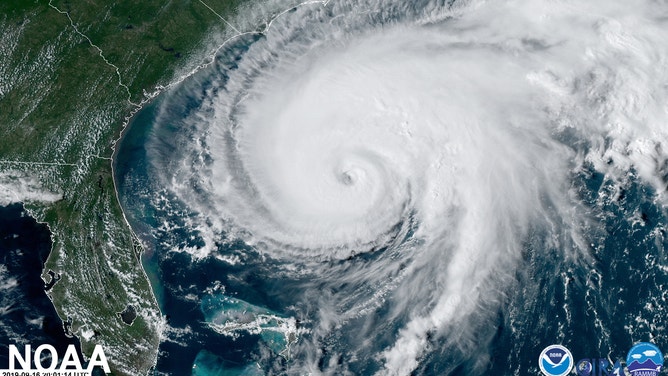SpaceX rocket carries game-changing weather instruments into orbit
Data from COWVR instrument will be helpful for hurricane forecasting

Hurricane Humberto, as captured by a NOAA satellite September 15, 2019.
(NOAA Satellites)
KENNEDY SPACE CENTER, Fla. – Two new weather instruments launched into space on Tuesday could be a game-changer when it comes to gathering information for hurricane and weather forecasting.
Onboard the SpaceX rocket was the Compact Ocean Wind Vector Radiometer, or COWVR, which will measure the direction and speed of winds at the ocean surface.
This new instrument was developed over a decade and was initially scheduled to launch into space on a military satellite to replace the WindSat instrument, which collects ocean and wind data for the Department of Defense.
WindSat is on the military's Coriolis satellite and has been in orbit since 2003.
CHRISTMAS DELIVERY: SPACEX ROCKET LAUNCHES ON CARGO RUN TO SPACE STATION
According to NASA, an instrument like COWVR or WindSat measures the ocean winds by detecting naturally occurring microwave emissions from the Earth's surface. That data can reveal the speed and direction of the wind, which is helpful for hurricane forecasting.
The COWVR instrument weighs about 130 pounds, about an eighth of the mass of WindSat. It also uses fewer moving parts to spin the rotating microwave sensor and collect important data.
"COWVR has the distinct possibility of being an absolute game-changer for our users," said Don Boucher, principal scientist in the chief architect's office in the Space Force. "It's simpler to build, simpler to test, the timeframe to build the instrument is less. So, you can build more of them for the same amount of money as one conventional radiometer. That has tremendous implications for our supply chain."
Also on board was the Temporal Experiment for Storms and Tropical Systems, or TEMPEST, which will look at atmospheric humidity.
According to NASA, that instrument will be sensitive to a different range of microwave signals that gather information about moisture in the atmosphere.
"TEMPEST brings to the table an ability to sense both the amount of atmospheric moisture and its vertical distribution," said Steve Swadley, the lead for calibration and validation of microwave sensors at the U.S. Naval Research Laboratory in Monterey, California. "This is important for both numerical models and for characterizing the moisture surrounding tropical cyclones."